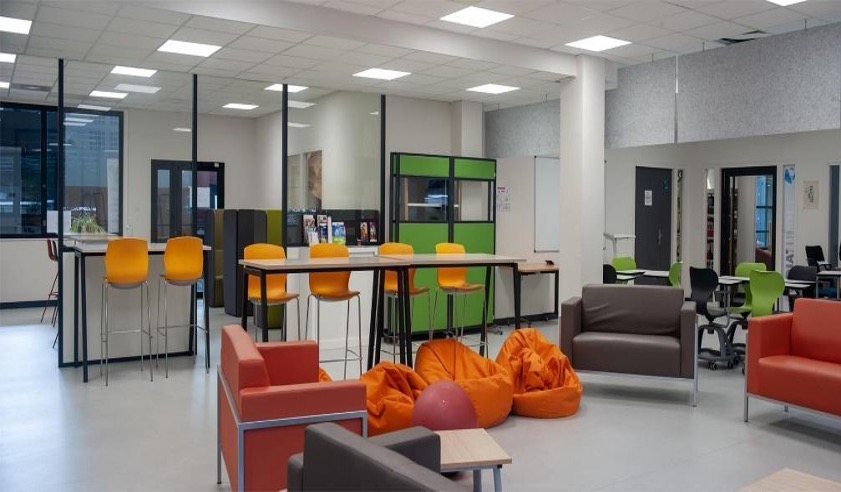Chapter 3 – Rethinking Physical Space to Promote Inclusive Learning

The configuration of the space is essential. It must meet the diverse needs of the public, including those in difficulty, by offering a framework that promotes concentration, attention and inclusion. The aim is to encourage active posture through optimal physical well-being.
Various methods and furnishings to promote active participation include:
- Sofas, footstools, exercise balls, adjustable tables (high or low), and office bikes.
- Designated areas for projection, discussion, and both group or individual work.
- Simple displays, attention to lighting, and comfortable, adjustable furniture.
The positive impact of an empowering environment can be measured by the support of learners and trainers alike, as it promotes learning and well-being throughout the training process. It facilitates the acceptance of differences, increases motivation, and promotes more inclusive class dynamics, as it encourages:
- Collective intelligence and cooperative activities
- Time for reflection and exchange, which fosters motivation, self-confidence and self-awareness.
- A stronger group dynamic that embraces the unique needs of each learner.
- The development of learners’ metacognition[1].
It is important to point out that a layout that works for one group may not necessarily work for another; making it necessary to adapt the room’s organisation to meet specific inclusion needs.
[1] i.e. their ability to identify their own functioning in relation to their learning and success objectives.
